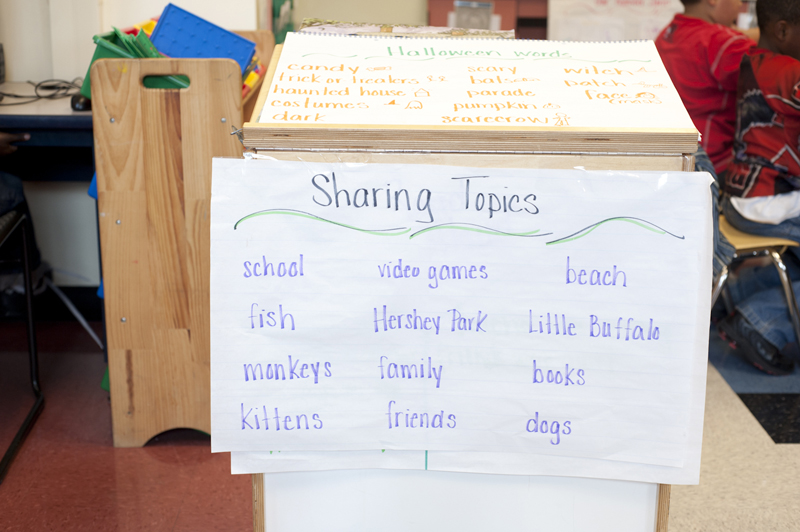
Along with playing an important role in building a positive classroom community, the sharing component of Morning Meeting creates opportunities for students to practice the critical skills required for clear, respectful, caring, empathic communication. While open-format sharing gives students plenty of practice speaking to the group and asking for questions and comments, there are times throughout the year when it can be productive to use a theme to guide their sharing. Here are a few themes, and corresponding structures to facilitate conversation, you can use to engage your students.
A themed partner sharing can be especially effective after a long weekend or school vacation because everyone is excited and full of things to talk about. Making the theme weekend or vacation news lets children really chat with another person and get meaningful questions and comments. Plus, everyone shares, which seems important after several days away.
Pair this kind of sharing with the activity Just Like Me. Include things that you overheard several children talking about; for example, “Over the weekend I played outside.” All children who also played outside stand up and proclaim: “Just like me!” It brings the sharing together, and everyone feels included. End the sharing by calling out “Over the weekend I had fun!” That usually brings all the children to their feet, so everyone can end on a high note!
Over the summer, consider sending incoming students a welcome letter that asks them to bring in a drawing or a photo of something they did over the summer. Limiting them to pictures or photos avoids “bring and brag” and “haves and have-nots” problems. Bring your own photo in first so you can model the sharing procedure. Having a concrete theme helps relieve the anxiety of sharing so early in the year, before students really know each other. The many common summer memories also help students connect with their classmates.
After each sharing, post the picture or photo on the front white board. That way, the front board can serve as a place for everyone’s different experiences to come together.
A sharing on personal heroes really appeals to upper elementary students. Such a sharing can tie in nicely to academic content, such as a unit on American history. It also shows the children that heroes are everywhere, not just in books, movies, and video games.
Here’s how Paula Denton, EdD—author of The Power of Our Words and coauthor of The First Six Weeks of School—incorporates this theme into Morning Meeting sharing:
“After we explore what the word ‘hero’ means, I ask students to think about someone who is a hero to them. They might choose a well-known athlete, musician, politician, or other public figure. Or they might choose someone not well known: a parent or other family member, teacher, neighbor, or friend.
I model the sharing by telling the children about my friend Susan. ‘She’s a hero to me,’ I say, ‘because when she saw some people being mean to her coworker, she stood up to them. She told them they should stop even though she was afraid they would be mad at her.’ Then I take questions and comments. Children typically ask questions such as ‘What did they say when she told them to stop?’ and ‘Did they really get mad at her?’ Their comments might be ‘She was really brave’ or ‘I hadn’t thought about a friend being a hero before.’
Over the next week or so, everyone gets a chance to share about their personal hero. Through their questions and comments, classmates sometimes explore connections between personal and historical heroes. And they deepen their understanding of what makes a hero and why heroes are so interesting and important to us.”
Looking for more Morning Meeting sharing ideas? Check out 80 Morning Meeting Ideas for Grades K-2 and 80 Morning Meeting Ideas for Grades 3-6. For a more comprehensive look at Morning Meeting, including advice for how you can use it in your classroom, see The Morning Meeting Book.